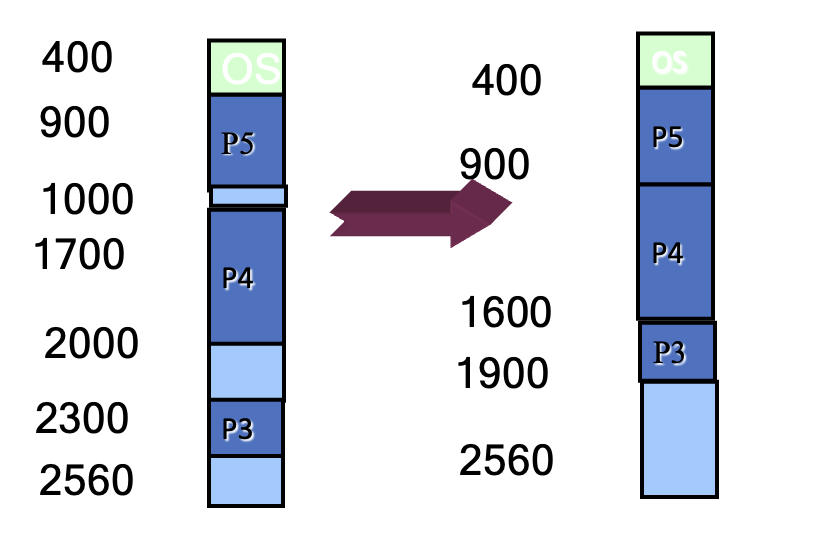The basics
Address Space
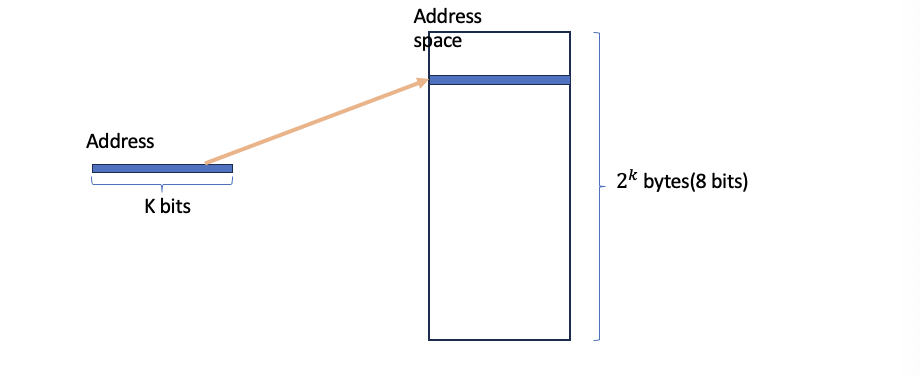 Definitions
Definitions
- Address Space: All memory locations that a program can refer to.
- Virtual Address: Addresses in process’ address space
- Physical Address: The actual address in real memory (RAM) where data is stored.
- Translation: The process of converting virtual addresses to physical addresses.
Memory Management Concepts
- Main Point: Memory management is crucial for sharing memory between multiple programs (processes) that are running on the computer.
- Make it easy for programs to find memory space.
- Reduce wasted memory space (maximizing utilization).
Memory Management Responsibilities
- Memory Tracking: Keep track of memory usage
- Allocation and Deallocation: Allocate memory space to programs when they need it and reclaim it when they are finished.
- Sharing: Ensure that memory is shared efficiently among multiple processes.
Memory Management
- The memory manager is responsible for managing memory usage, allocation, and deallocation.
Physical and Logical Memory
- Physical Address: The address seen by the memory unit.
- Logical Address: The address used/generate by the CPU.
- Memory Management Unit (MMU): A hardware component that translates between logical and physical addresses.
Base and Limit Registers
- Purpose: To protect memory , Define the logical address space
- How They Work: A pair of base and limit registers define the allowed memory range for a program.
- Hardware Protection: The CPU checks every memory access by a program to ensure it’s within the defined limits, preventing programs from accidentally accessing memory belonging to other programs.
Address Binding
-
Main Point: The process of connecting virtual addresses (used by a program) to physical addresses (in real memory).
-
Binding Stages:
- Compilation Time: Addresses are symbolic (e.g., variable names) during compilation
- Load Time: When a program is loaded into memory, addresses are assigned.
- Execution Time: The CPU uses physical addresses to access data during execution.
Address Binding Example
- Programs reside on disk as executable files.
- Upon execution, they are loaded into memory.
- Initial physical address of the first process: 0x0000.
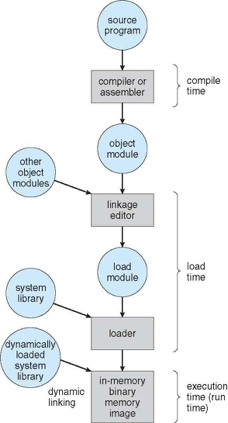
Swapping
-
Main Point: A technique to move processes between main memory (RAM) and secondary storage (e.g., hard drive).
-
Purpose:
- To free up memory for other processes.
- To allow for more processes to be run than fit in memory at once.
~schematic view of swapping
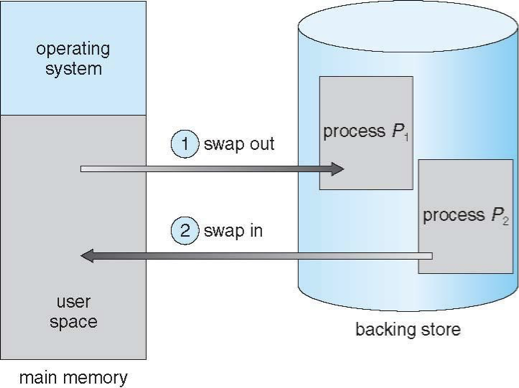
Memory Management Techniques
- Overlays: A method for managing programs larger than available memory.
- Memory Partitioning: Dividing memory into sections to allocate space for processes.
Overlays
-
Main Point: A way to manage large programs that are too big to fit in physical memory at once.
-
How It Works: Only the needed data is loaded, and as the program progresses, data is swapped in and out based on its needs.
-
User Management: Overlays are typically managed by the user program, not the operating system.
-
Challenges:
- If the entire program and its data need to be in memory for execution, overlays limit program size.
- The programmer needs to design the overlay structure, which can be complex.
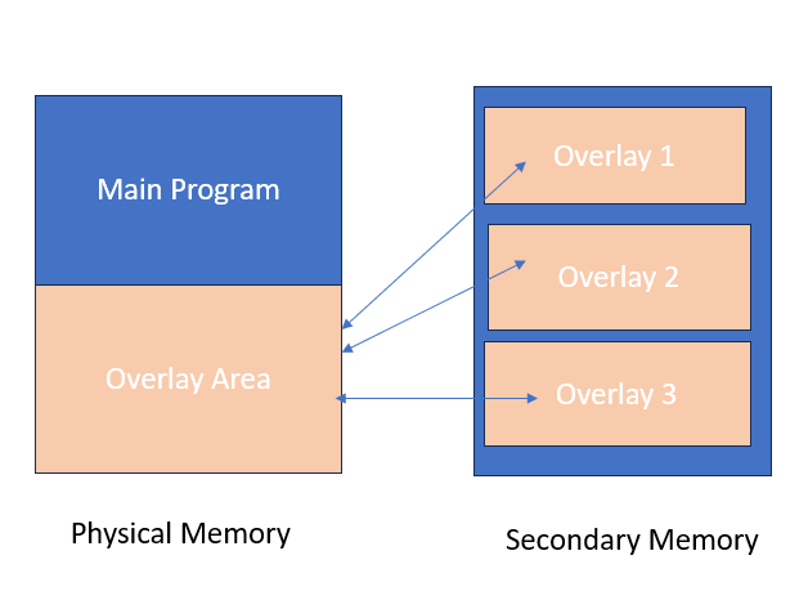
Single tasking with Overlay
-
Main Point: Uses overlays in a single-tasking environment (only one program runs at a time).
-
How it Works:
- A single program is loaded into memory in parts (overlays).
- This enables the execution of larger programs in limited memory.
-
Disadvantage: A process cannot take advantage of more available memory if it’s already running in overlays because the overlay structure is defined for a specific amount of memory.
Memory Partitioning
-
Main Point: Dividing memory into sections to allocate space to processes. This is a common technique for managing multiple processes.
-
Types:
- Fixed Partitioning: Memory is divided into fixed-sized partitions.
- Variable Partitioning: Memory is divided based on the requirements of each process.
Memory Partitioning - Fixed
- Each partition may contain exactly one process
- The degree of multiprogramming is bound by the number of partitions
- When a partition is free, a process is selected from the input queue and is loaded into the free partition
- when a process terminates, the partition becomes available for another process
Memory Partitioning - Variable
-
Description: The memory is divided into sections based on the size of each process. This allows for more flexible memory allocation.
-
How it Works: When a process arrives, the OS searches for a large enough space in memory.
-
loads the process wherever the memory space is available using first fit, best fit or worst fit algorithms
-
Memory Allocation: Common algorithms for variable partitioning:
- First Fit: Allocates the first free space that is big enough.
- Best Fit: Allocates the smallest free space that can accommodate the process.
- Worst Fit: Allocates the largest free space.
Fragmentation
-
Main Point: Memory partitioning can lead to fragmentation, which is wasted memory space.
-
Types:
- Internal Fragmentation:(in FIXED Partitioning) Wasted space within an allocated partition.
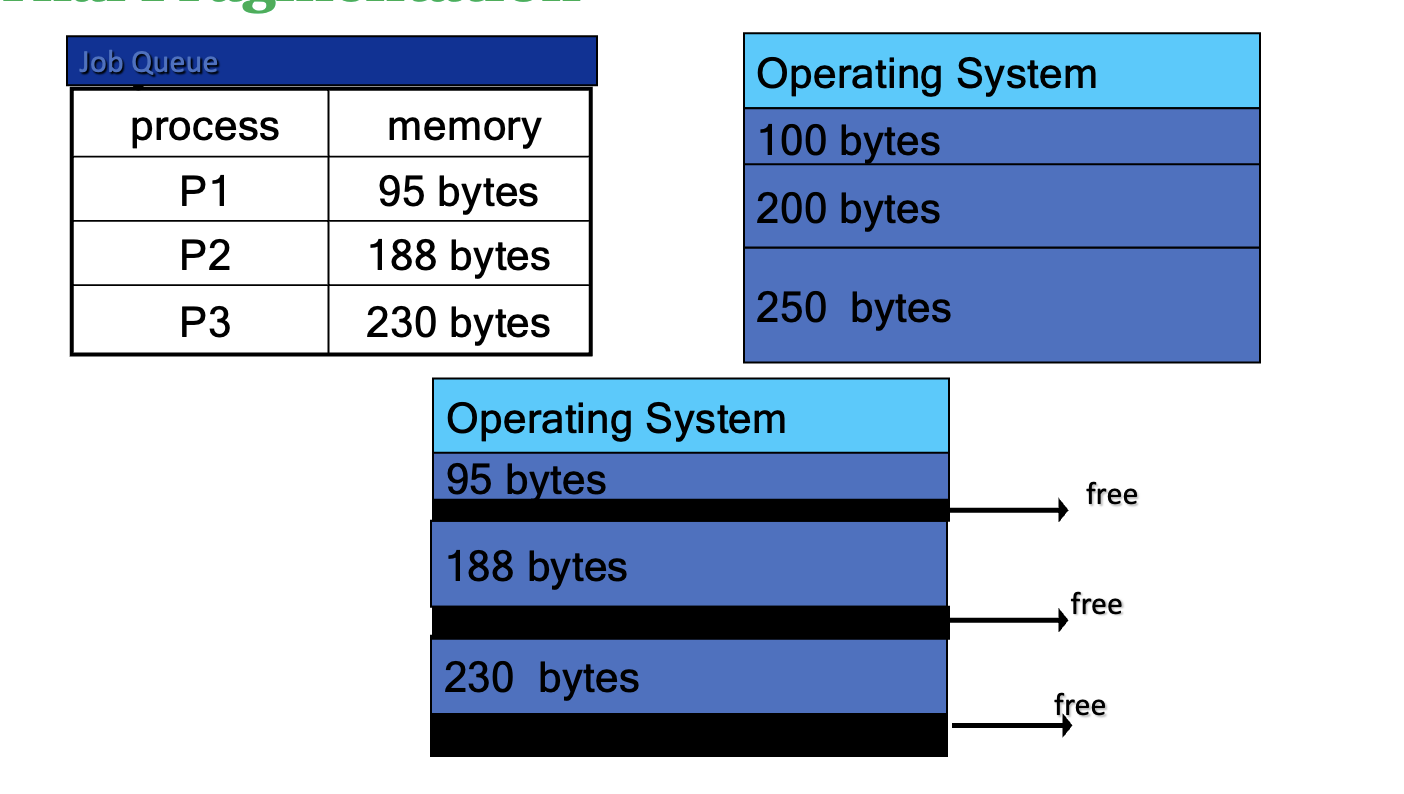
- External Fragmentation: (in VARIABLE Partitioning) Wasted space that is too small to allocate to new processes.
- Internal Fragmentation:(in FIXED Partitioning) Wasted space within an allocated partition.
Solution for External Fragmentation
Compaction, A technique used to resolve external fragmentation by compacting (moving) free space together into larger block.
